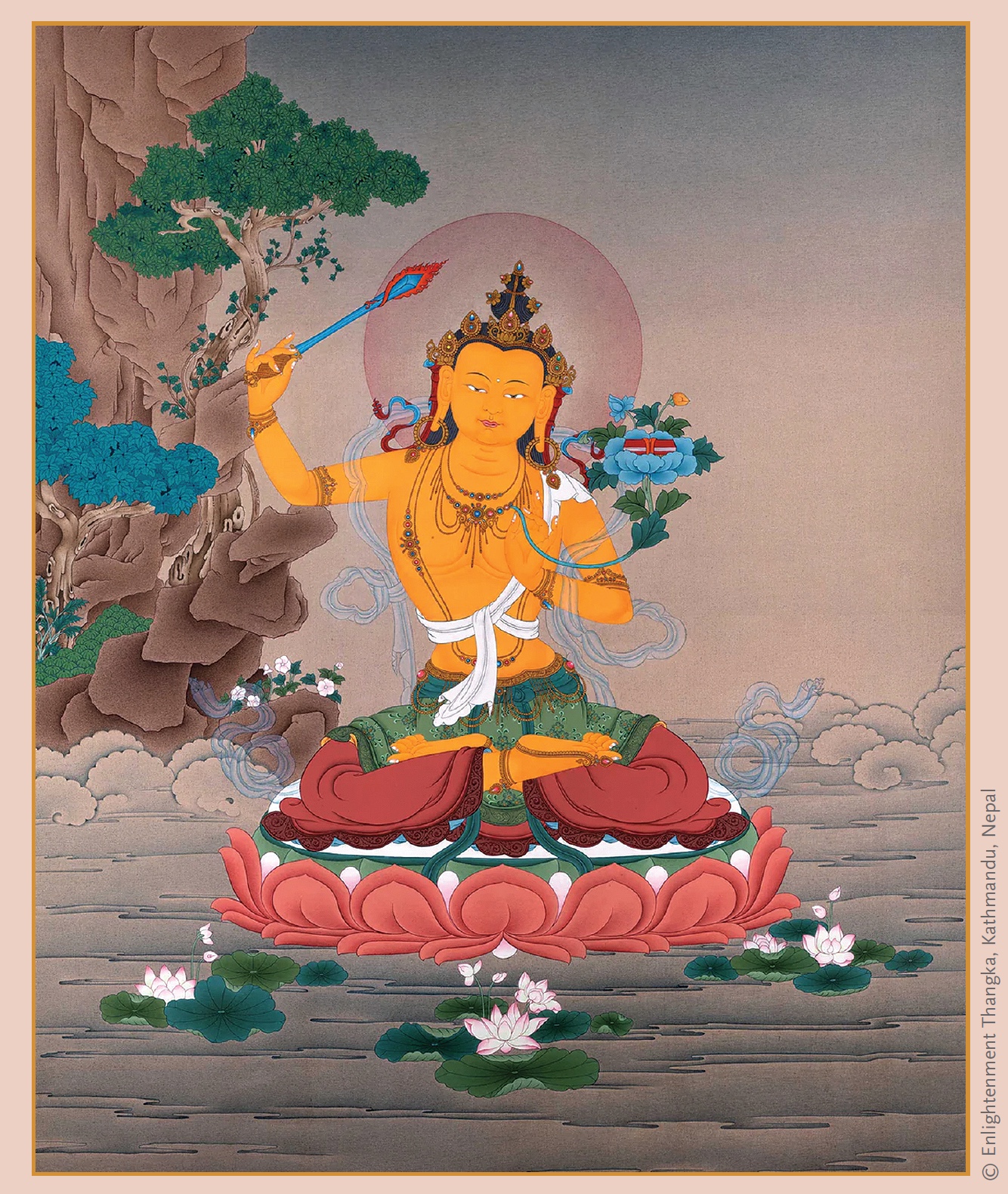Since the essence of the whole, complete dharma teaching that we need to develop in our being is the bodhicitta, we generate compassion, and then just focus on all sentient beings. As long as beings have some consciousness, then they have feelings, and according to that they can experience happiness or suffering. All those sentient beings, in one lifetime or another, have been connected to oneself as one’s very dear mother or father and so forth. So, for that reason, one wants to generate compassion to pay back the kindness of their gift through wishing them happiness—temporary happiness and ultimate happiness. Temporary happiness is just temporary; it doesn’t last long. Ultimate happiness is enlightenment, or buddhahood. In that way, one should think that one wants to help them to liberate from the suffering of samsara and from the cause of the suffering of samsara, and then to lead them to enlightenment. For that reason, then, the other aspect of the bodhicitta is called application bodhicitta.
To begin, one listens to the practice, or the Prayer to Manjushri, and then contemplates those words to understand the qualities of Manjushri— Manjushri Buddha or Manjushri bodhisattva—his enlightened qualities, enlightened speech, and enlightened body. And when one understands that, then it is possible that one can develop a sense of devotion, faith, and trust.
With that, then, one can do these aspiration prayers, including accumulating this mantra, every day as much as possible, until one can accumulate a few million. Then definitely one can receive the blessings, which help to purify our obscurations. As it is said in the text, those two kinds of obscurations—afflictive emotional obscurations and cognitive obscurations—can be purified. Then the innate quality of the buddha nature or our primordial nature that is within ourselves—it doesn’t have to come from anywhere—will just naturally arise. Then one could gain a great deal of intelligence, or that intellect will develop into what is called wisdom, yeshe, and then finally one could experience the emptiness nature.
The Emptiness Nature of Phenomena
The emptiness nature is related to all phenomena, the external world. The inanimate kind of phenomena are also emptiness in nature. And then all internal living beings—meaning the six classes of beings, or the six realms, all the consciousnesses— their nature is also emptiness. And not only that: Both the samsaric phenomena and samsaric beings, and even the buddha fields and enlightened buddhas are also emptiness in nature. So, emptiness is the source of everything. Because of emptiness, everything is possible. And that emptiness is the nature of all phenomena, in the same way that one’s mind’s nature is emptiness. That is how it is emptiness in nature—not just from the absolute point of view, but even in the relative sense of understanding, or from the relative point of view, one’s mind and all phenomena, everything, is emptiness in nature. It is not that it has become emptiness because we have understood. It is not emptiness because all these great scholars and buddhas taught, “Oh, it is emptiness.” It’s nothing like that. From the moment these phenomena came to exist, from beginningless time, they have always been emptiness in nature.
For example, it’s like fire. You know that fire and fire’s nature is heat. So, from the moment that fire first happened, that fire’s nature was heat; it was hot. It’s not like in the beginning that fire was not really hot and the heat came later—it’s nothing like that. Similarly, water’s nature is liquidity, and gold’s nature is to shine. It’s the same with the sun and the sun’s light; the moment there was sun, from beginningless time, the sun’s light was there, because that is the sun’s nature. So, yellow shining is gold’s nature; liquidity is the nature of water. And just like that, phenomena’s nature is emptiness. Our mind’s nature is emptiness from the moment it first exists.

